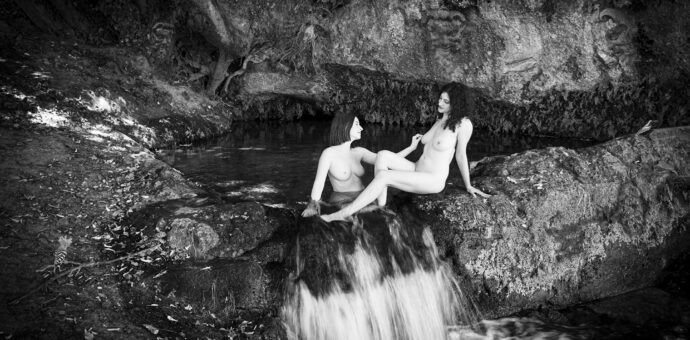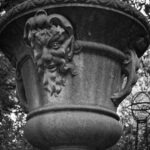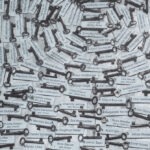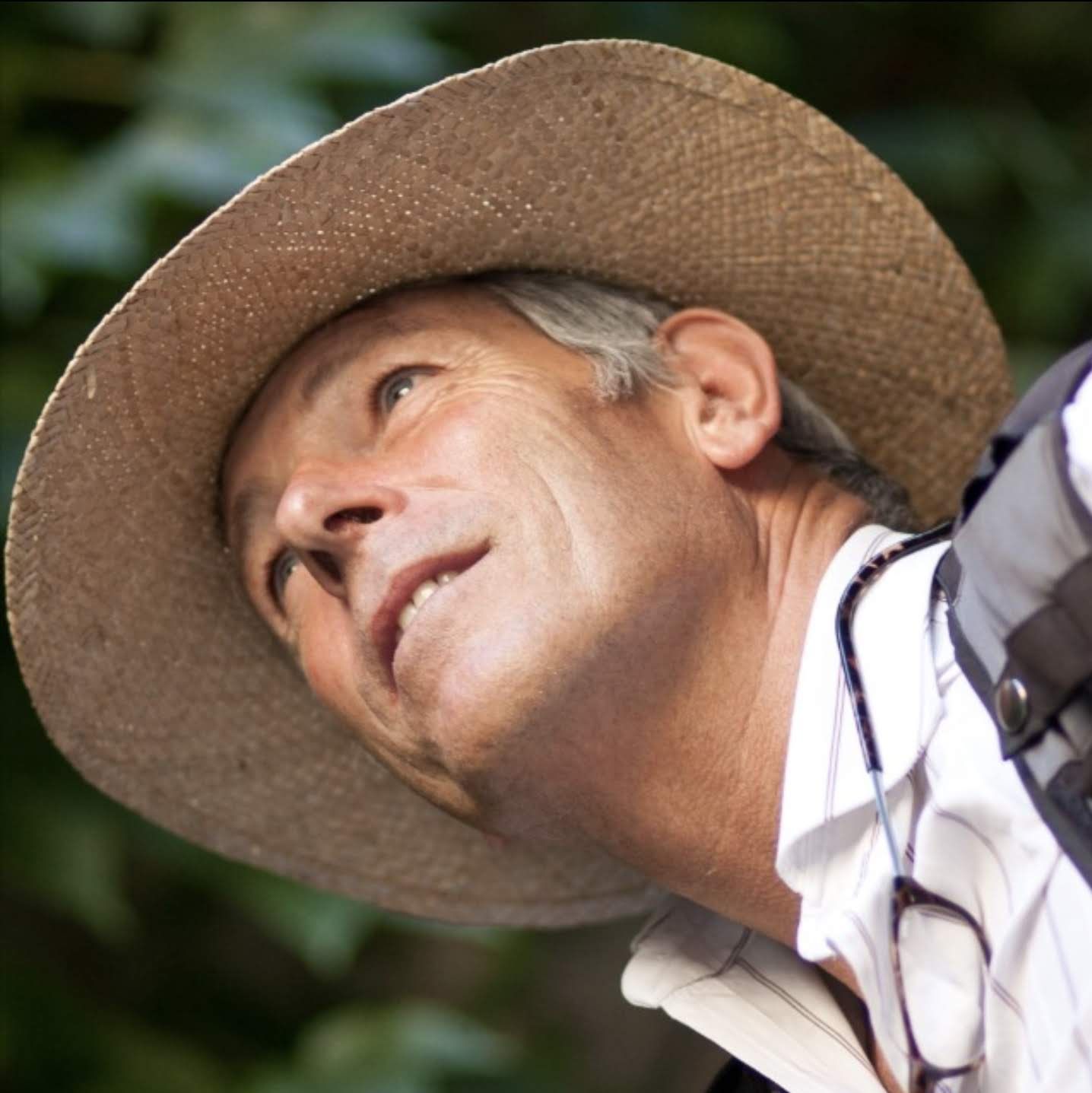Maayan Shoot
One day in mid September 2023, a pair of Israeli women came into my gallery. As they were intrigued by the figure in the landscape images, I asked them if they would like to participate in a new picture. “Yes, we’d love to but we are leaving for Florence today!” I urged them to stay another night and the following afternoon we were bowling across Tuscany to our location.
The Source
One of them was called Maayan, meaning Source in English. I was immediately captivated by the name. Years ago I had read Michener’s The Source and it had left a lasting impression upon me. I knew of a spring not so far from Orvieto of uncommon beauty and crystalline clarity.
The d’Estrèe Sisters
I based the pose loosely on the famous picture of the Fontainebleau School of the d’Estrées sisters. It is a picture that embraces love, sisterly love, but also that of Henry IV of France for his dead, uncrowned queen Gabrielle. Julienne touches the nipple of her sister the queen, a gesture suggestive of fertility.
However, after the girls left and I started working on the picture I became more and more intrigued by the idea of the source, and Michener’s 1965 book. The book is based upon meticulous research into the layers of civilisations in the Holy Land uncovered during a dig in 1963 by three fictional archeologists, a Jew, a Muslim and a Catholic. The story centres upon a spring, the source of civilisation beneath a mount, or ‘Tell’ in Israel called ‘Makor’, which also means Source.
Not far from the fictional Makor in Galilee, lies the massive rock of Mount Tabor, site of the Transfiguration, a site that unifies the Judaic faith with the Christian, when Jesus was flanked by both Moses and Isiah and shone in front of his three most devoted disciples.Tabor, according to popular belief, is connected to the Hebrew word for navel.
Daemons
The Source goes back to pagan times so I have placed mythological figures around the spring, leering fauns and satyrs – Gods became daemons in the bible. I have also added two birds, the Hoopoe (the title of one of the chapters in the book) the national bird of Israel, and the Sunbird, that of Palestine.
One of the symbols of Nakba, or the catastrophe, of the expulsion of Palestinians in 1948, is the key, which represents the longing for return. This is not just a Palestinian symbol of pain; in Vienna, beneath the pavement near Sigmund Freud’s residence till his expulsion by the Nazis in Berggasse 19, is a glass covered cavity containing the door keys of Jews deported to the extermination camps (photo below). The Jews too, for centuries longed to return to the Promised Land, “Next year in Jerusalem!” they sung at Passover.
The shadow of the key lies across my picture.
Michener’s The Source ends on what seems now an impossibly optimistic note, given the events of this autumn, and all the other horrors that have occurred since The Source was published in 1965. But is it too much to hope that the message of the book, that of a shared history in a shared land with a shared future, is too difficult to attain? The two women are both Israelis, but could not one be Jewish, the other an Arab Christian or Moslem?
As one of the archeologists says in The Source, “So we were all lost together. Christians, Arabs, Mongols. Because when men ignite in their hearts a religious fury, they inflict at the same time a blindness upon their eyes.”
As one of the girls, Roni, says, ” It feels so good to be naked in nature.”





